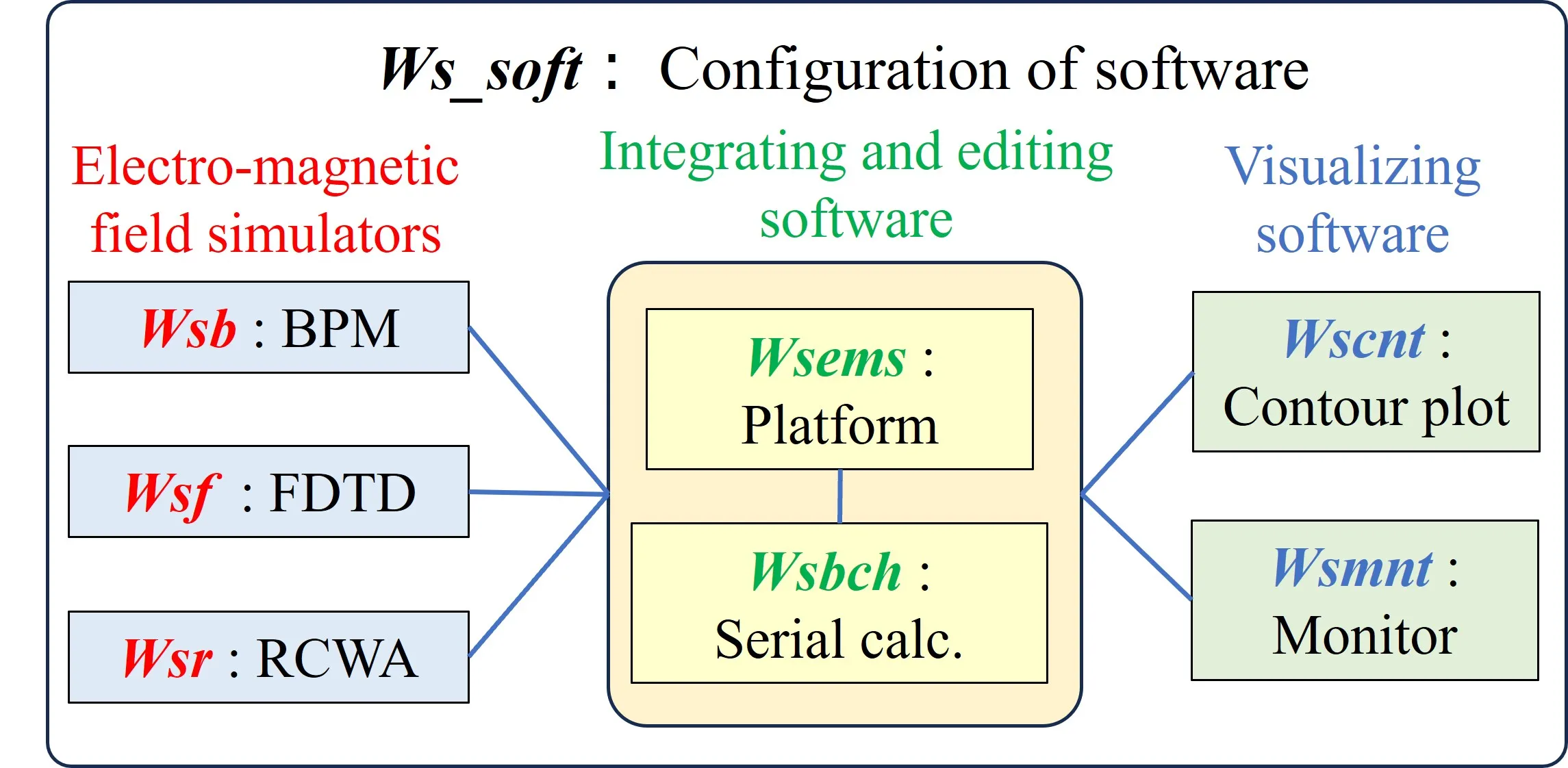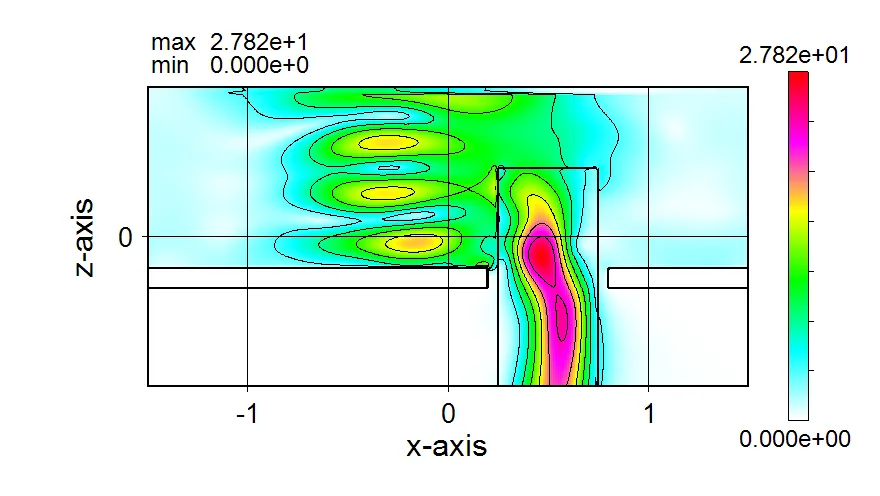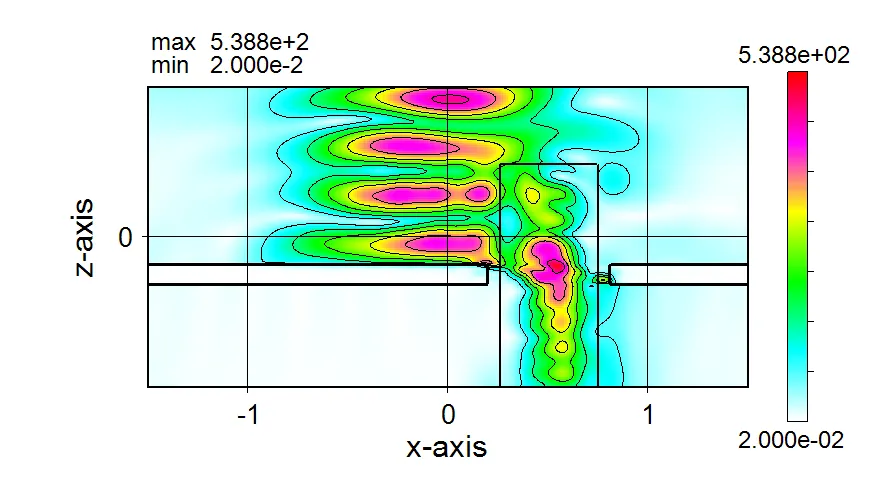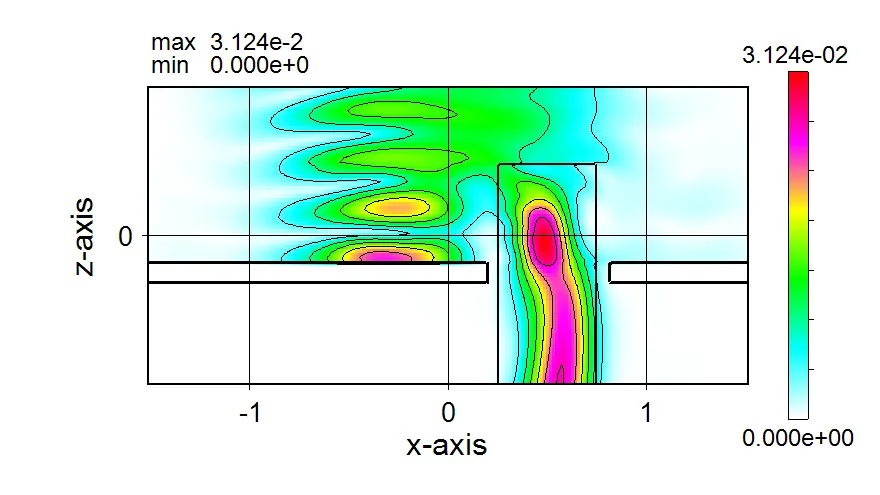FDTD/RCWA/BPM - Selectable electromagnetic simulation software:Ws_soft
To JapaneseFDTD, RCWA and BPM electromagnetic field analysis can be performed on the single platform Wsems. ▲top
FDTD (Wsf) and RCWA (Wsr) are exact calculations based on Maxwel's equation. BPM (Wsb) is a fast calculation based on the Helmholtz wave equation. By having these three, most problems of electromagnetic field calculations can be solved.Supported OS : Windows (64bit)

Wsf, Wsr, and Wsb are execution programs for FDTD, RCWA, and BPM. Wsbch supports a serial calculation and Wscnt and Wsmnt visualize calculation results. Wsems is a platform for those programs and all of them are set by Wsems.
● Comparative calculation examplesNew 2024/11/12
Wsf(FDTD) is a slow computing speed and Wsr(RCWA) has high memory consumption, but both are exact solutions; Wsb(BPM) is an approximate solution, but its accuracy is as good as FDTD while maintaining the features of fast computing speed and small memory consumption.
● Download (Ws_soft_110.zip, 97MB) New 2025/01/03
Most calculations are free of charge (Sample calculation examples). See below for instructions on how to use them.
● Installation and basic usageNew 2025/01/20
For more information see next. Platform of Ws_soft : Wsems (pdf)
Differences between the exact solution, FDTD and RCWA. ▲top
(1) FDTD solves the differential equation of Maxwel's equation in the order of elapsed time from oscillation, so it takes time for the propagation to stabilise (convergence); RCWA solves Maxwel's equation as a standing wave, so a convergent solution is obtained from the beginning.(2) In the case of dispersed materials such as metals, the extinction coefficient becomes larger than the refractive index and the calculation runs out of control over time in FDTD, so it is necessary to deal with dispersed materials; this is not a problem in RCWA.
(3) FDTD is applicable to distributed sources, CW oscillation and pulsed oscillation, and the boundary conditions for analysis can handle absorption boundaries such as PML and periodic boundaries (however, periodic boundaries cannot satisfy Bloch's conditions except for certain conditions); RCWA sources are uniformly distributed only and the boundary conditions for analysis can only handle periodic boundaries, but the periodic boundaries naturally satisfy Bloch's conditions.
(4) FDTD allows the light source to be placed in any horizontal or vertical plane; RCWA can only be placed in the uppermost plane.
(5) FDTD has no horizontal or vertical azimuthal dependence in the representation of light propagation because space is divided into isotropic grids, while RCWA is difficult to represent propagation in a completely horizontal direction because space is divided into stacked structures.
(6) Wsr improves on the shortcomings of RCWA, allowing the calculation of aperiodic structures by accommodating distributed light sources and absorbing boundaries, and the source position can be set to any horizontal plane.
The most suitable method can be selected from the high-precision FDTD and RCWA or the fast BPM, depending on the analysis objective. ▲top
All of the following input condition settings and calculations are performed by Wsems.● FDTD simulation software : Wsf New 2024/11/12
 Analysis software based on the Finite-difference time-domain method (FDTD) that pursues functionality. It is possible to select the light source (source position, polarization, pulse or CW, uniform or Gaussian distribution), boundary conditions (periodic or PML), select dispersive materials, calculate scattering fields, calculate far fields in upper and lower surface direction and in 360 degree directions, perform frequency analysis, and analyze light amounts inflowing and outflowing from boundary surfaces of designated areas, or light amounts absorbed in the areas, and more. The computational load is large, but its solution is exact. It already supports multi-processors with OpenMP to speed up calculations.
Analysis software based on the Finite-difference time-domain method (FDTD) that pursues functionality. It is possible to select the light source (source position, polarization, pulse or CW, uniform or Gaussian distribution), boundary conditions (periodic or PML), select dispersive materials, calculate scattering fields, calculate far fields in upper and lower surface direction and in 360 degree directions, perform frequency analysis, and analyze light amounts inflowing and outflowing from boundary surfaces of designated areas, or light amounts absorbed in the areas, and more. The computational load is large, but its solution is exact. It already supports multi-processors with OpenMP to speed up calculations.● RCWA simulation software : Wsr New 2025/01/19
 Analysis software based on rigorous coupled-wave analysis (RCWA) for aperiodic structures. It is possible to select the light source (source position, polarization, uniform or Gaussian distribution), boundary conditions (periodic or absorptive), calculate far fields in upper and lower surface direction, calculate diffraction efficiency, and analyze light amounts inflowing and outflowing from top and bottom surfaces of designated areas, or light amounts absorbed in the areas. The memory consumption is large, but its solution is exact. It already supports multi-processors with OpenMP to speed up calculations.
Analysis software based on rigorous coupled-wave analysis (RCWA) for aperiodic structures. It is possible to select the light source (source position, polarization, uniform or Gaussian distribution), boundary conditions (periodic or absorptive), calculate far fields in upper and lower surface direction, calculate diffraction efficiency, and analyze light amounts inflowing and outflowing from top and bottom surfaces of designated areas, or light amounts absorbed in the areas. The memory consumption is large, but its solution is exact. It already supports multi-processors with OpenMP to speed up calculations.● BPM simulation software : Wsb New 2024/11/12
 Analysis software based on the beam propagation method (BPM), which has achieved high accuracy. It is possible to select the light source (incoherent or coherent, polarization type, uniform or Gaussian distribution), select the boundary conditions (periodic or absorptive), perform separation-calculation of transmitted and reflected light (forward and backward), calculate far fields in upper and lower surface direction, and analyze light amounts inflowing and outflowing from top and bottom surfaces of designated areas, or light amounts absorbed in the areas. The introduction of a new method (Babinet-BPM) enables precise representation of reflection, refraction, diffraction, and interference unlike conventional BPM. By extending a scalar theorem, Fresnel reflection can be represented using polarization parameters. The computing performance is overwhelming ( several hundred times higher than FDTD Wsf), and multi-processor support with OpenMP has already been implemented to speed up the computation.
Analysis software based on the beam propagation method (BPM), which has achieved high accuracy. It is possible to select the light source (incoherent or coherent, polarization type, uniform or Gaussian distribution), select the boundary conditions (periodic or absorptive), perform separation-calculation of transmitted and reflected light (forward and backward), calculate far fields in upper and lower surface direction, and analyze light amounts inflowing and outflowing from top and bottom surfaces of designated areas, or light amounts absorbed in the areas. The introduction of a new method (Babinet-BPM) enables precise representation of reflection, refraction, diffraction, and interference unlike conventional BPM. By extending a scalar theorem, Fresnel reflection can be represented using polarization parameters. The computing performance is overwhelming ( several hundred times higher than FDTD Wsf), and multi-processor support with OpenMP has already been implemented to speed up the computation.The programmes for visualising the calculation results and performing serial calculations are automatically started and configured by Wsems. ▲top
● Contour plot software : WscntContour and bird's-eye views for structural boundaries and light intensity distributions can be drawn and output in real time.
● Calculation progress monitoring software : Wsmnt
The progress of calculations for FDTD can be visualized and monitored.
● Serial calculation and data editing program : Wsbch
Serial calculation and data editing can be performed.
Reference information on software ▲top
While all are settable in Wsems, the followings are listed as a reference. (Membership)● How to use Wsb (pdf) ● How to use Wsf (pdf) ● How to use Wsr (pdf)